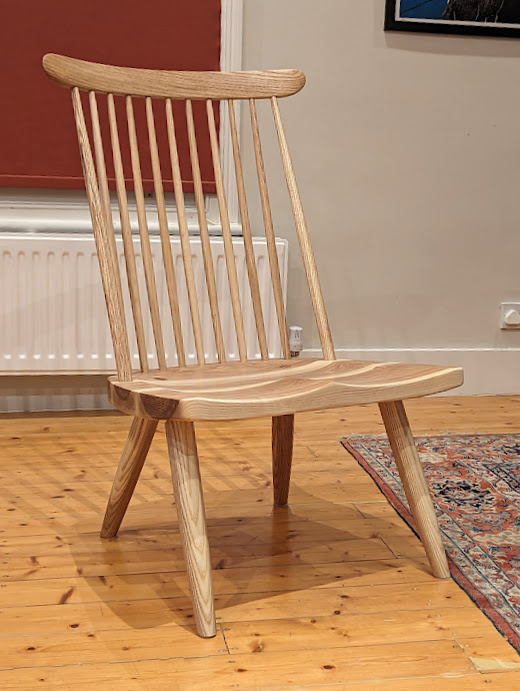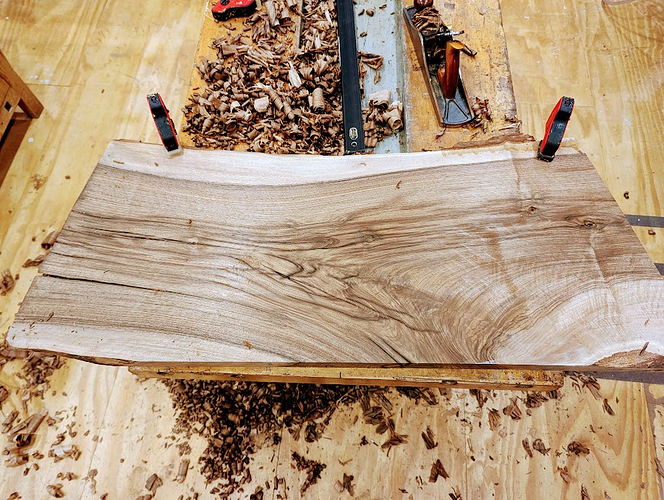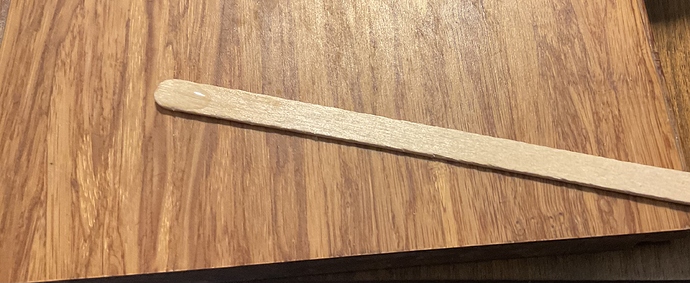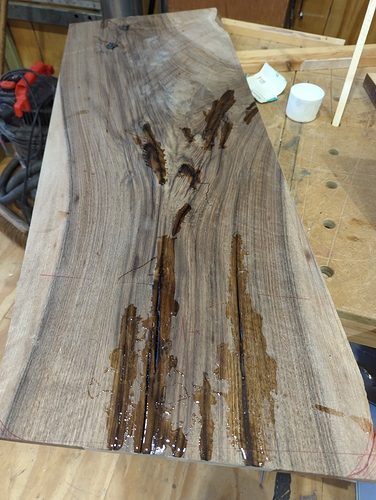I’ve started a new project which will be a two seater indoor bench. For shaping the seat I like the idea of doing some of the bulk removal on the big CNC and am hoping I might be able to get some advice / help.
The bench will be made similarly to this chair I made. The only real change is that I’m using a solid slab rather than laminating the seat and it’ll have stretchers to support the legs:
For the chair I carved out the seat by hand using a scorp, travisher and card scraper. However, the slab I’m using for the bench seat has some very gnarly grain which put up a real fight whilst I was flattening it. Given this, I’m wondering about doing the lion’s share on the cnc and then finishing by hand. This has the added bonus of learning a bit about the CNC process, this would be my plan should I ever make a set of chairs for repeatability and ease. For reference, here’s the slab complete with pretty, but unruly grain. It is English Walnut and will need some bowties and/or epoxy to stabilise some cracks:
Questions for CNC folks out there:
- To do this I’d need to model the slab and the shape of the impression I want to carve out. I only have access to a Mac. What free software could I use to do this? I’ve not done any CAD since uni so something easy to pick up!
- I’m not inducted on either CNC nor have any experience, is anybody interested in this project and up for helping?






